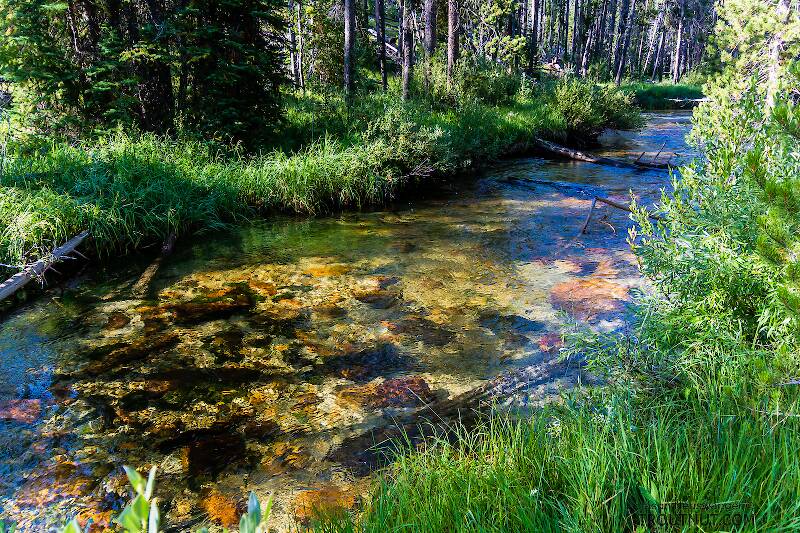
Salmonflies
Pteronarcys californica
The giant Salmonflies of the Western mountains are legendary for their proclivity to elicit consistent dry-fly action and ferocious strikes.


Female Baetis tricaudatus (Blue-Winged Olive) Mayfly Nymph Pictures
These nymphs were highly abundant in my early April kick net samples from the Yakima Canyon, and one of them emerged into a dun, which I photographed immediately. Similar-looking nymphs but with distinctly brighter color patterns were also abundant. I just photographed one. After extensive views under the microscope, it's clear the bright ones are males and the dull ones are females of the same species.
The most likely guess at the species is Baetis tricaudatus, which may be a complex of related species that haven't all been sorted out yet. It isn't a perfect fit to every key characteristic (and I never seem to find a Baetis that matches the expected pronotum color patterns, but that seems to be the closest.
The microscope images here were taken with different specimens from the main photos (so I could dissect them while preserving that one intact), but clearly the same species.
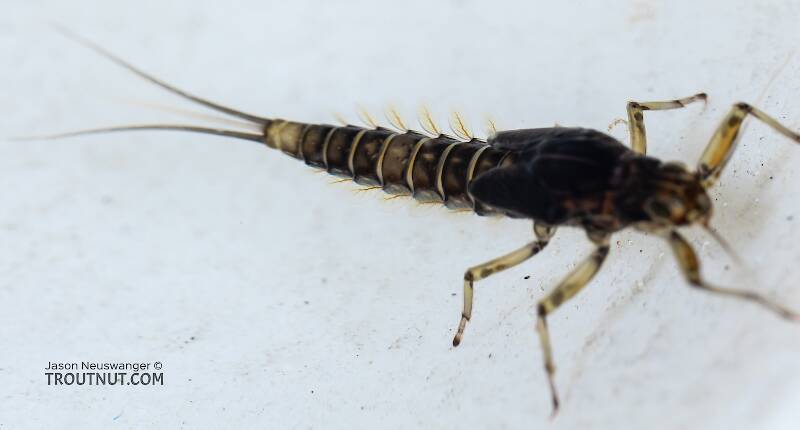
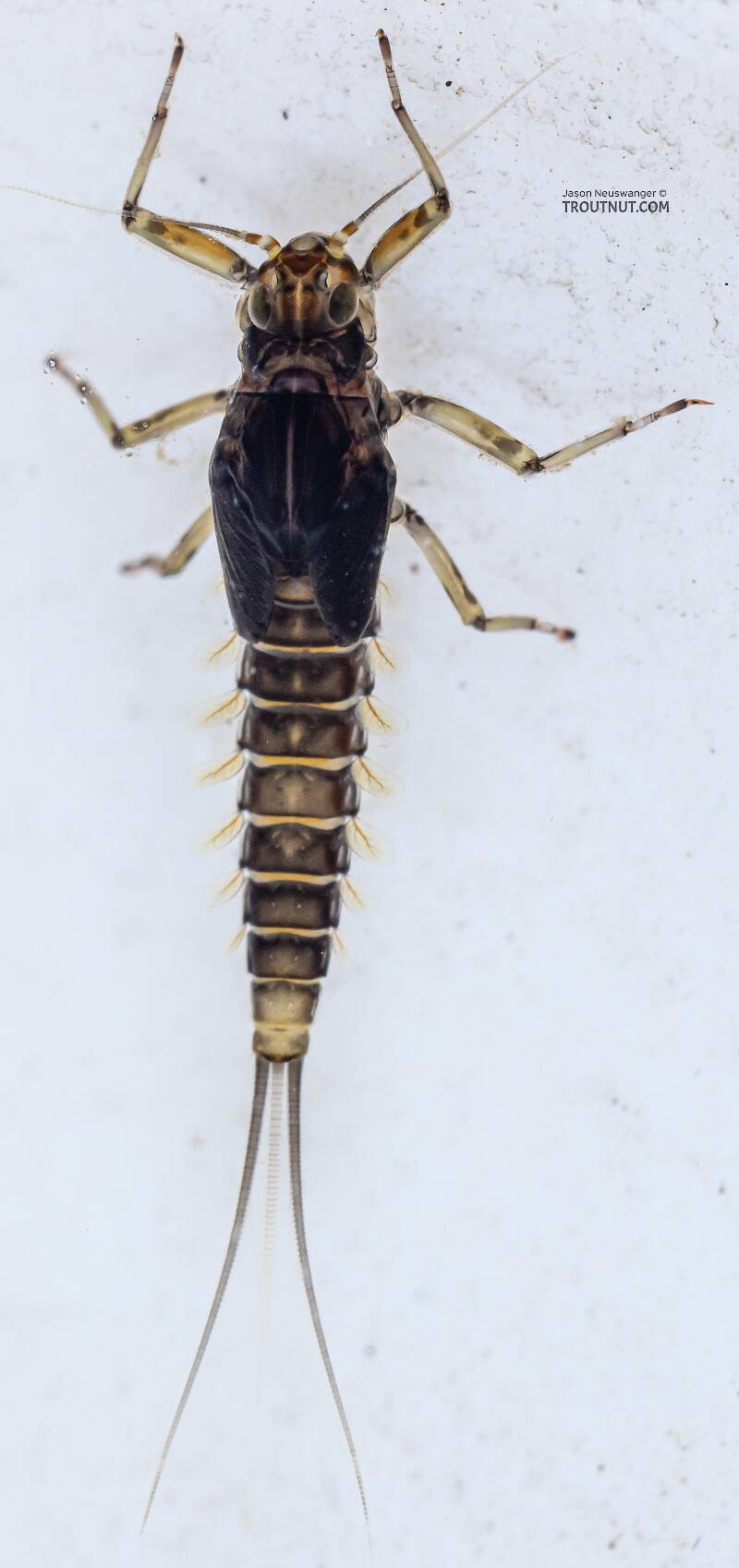
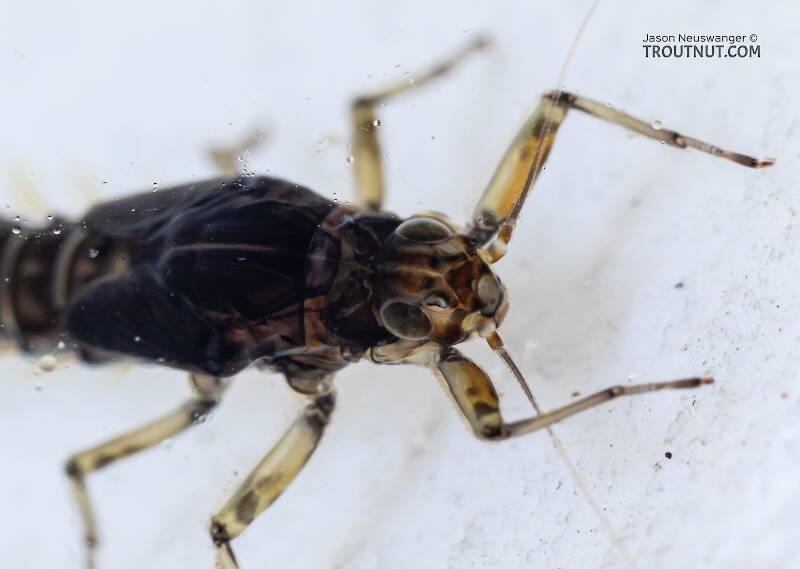
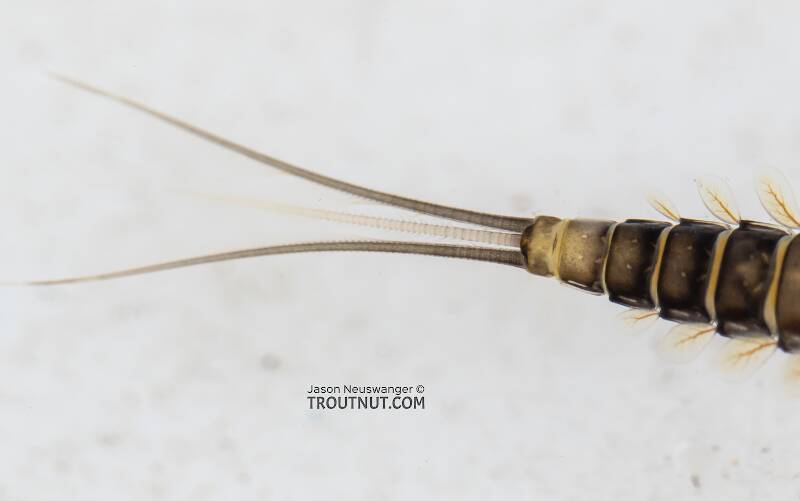
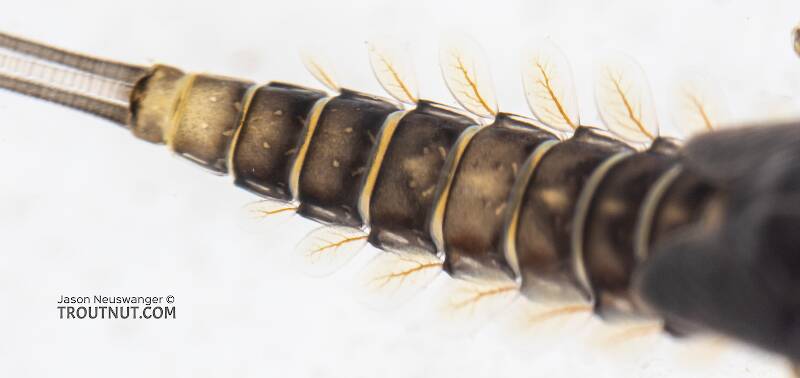
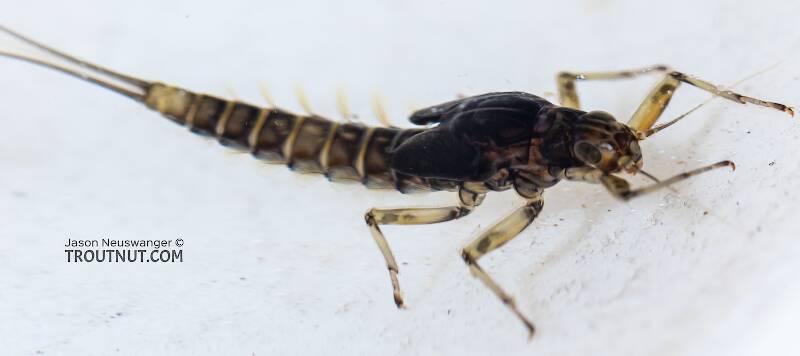
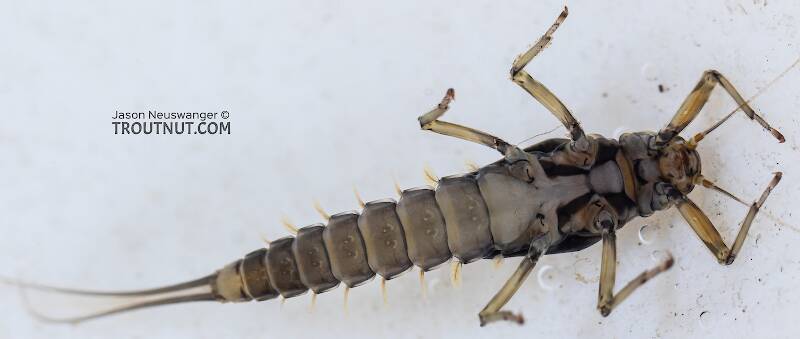
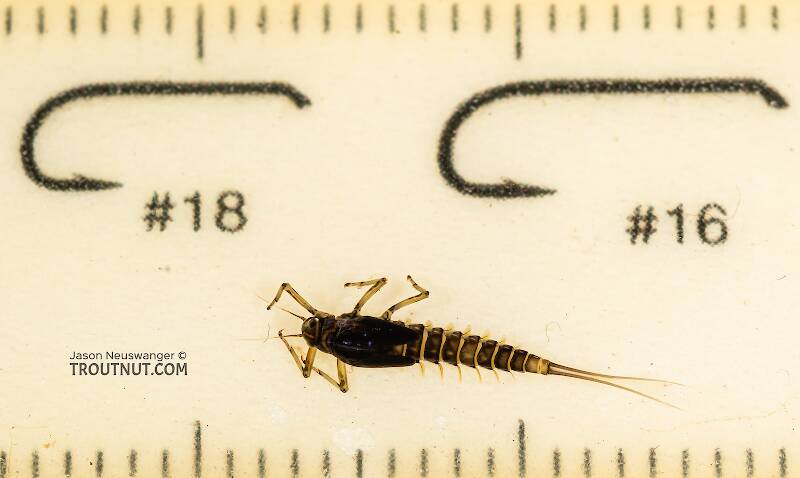
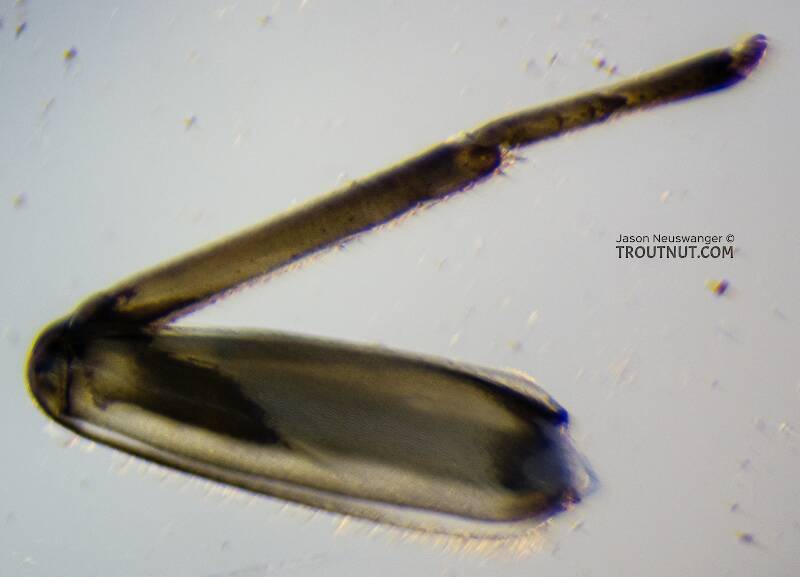
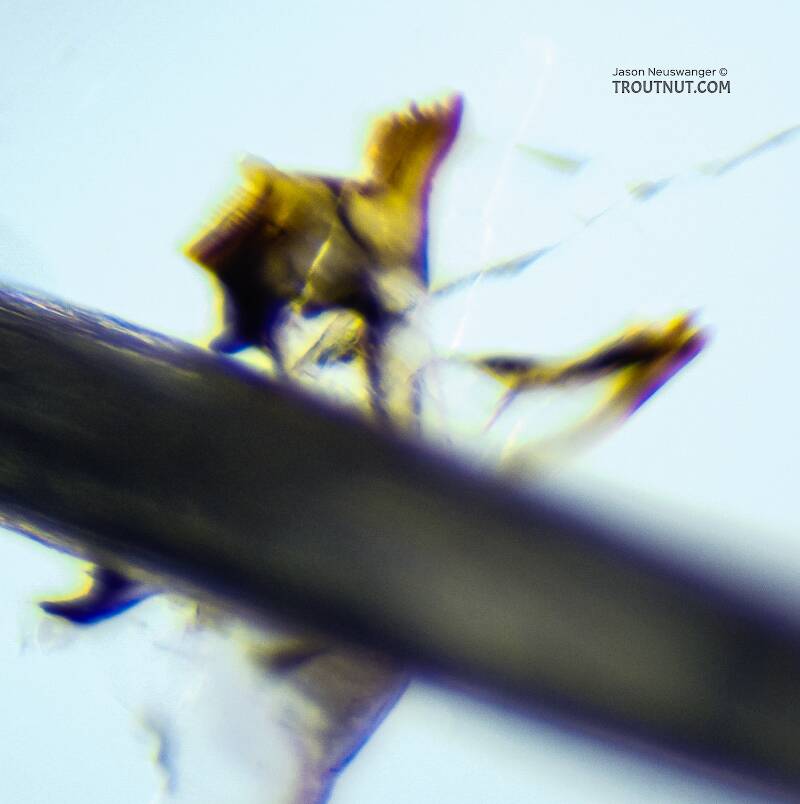
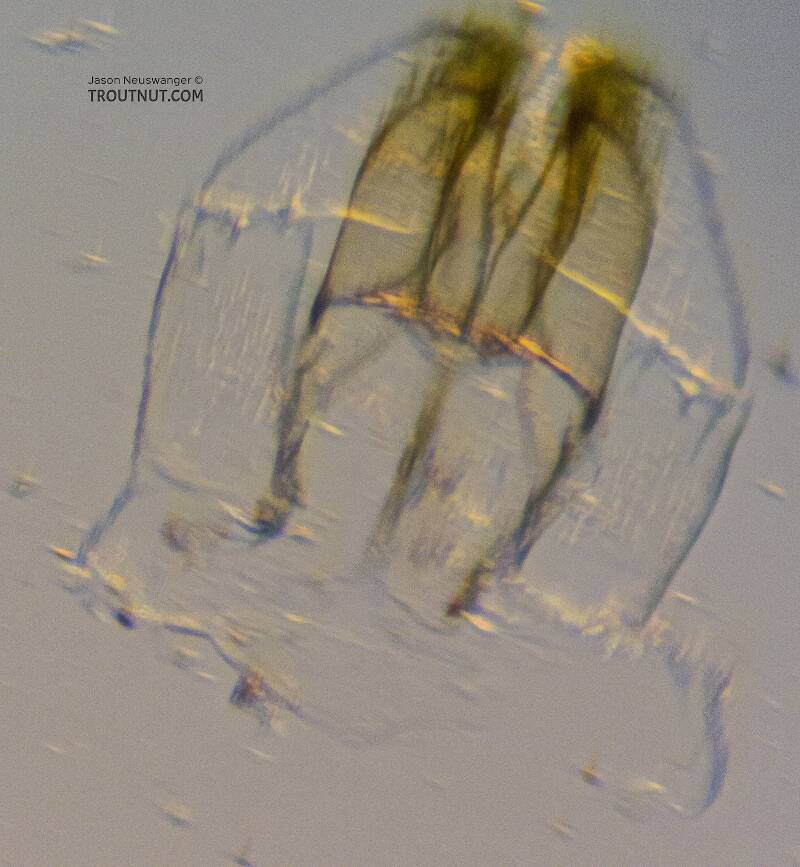
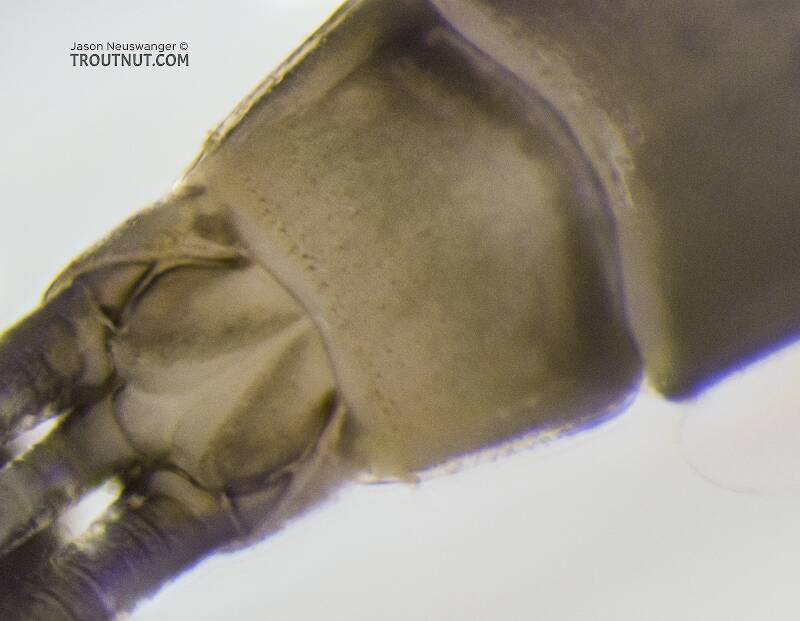
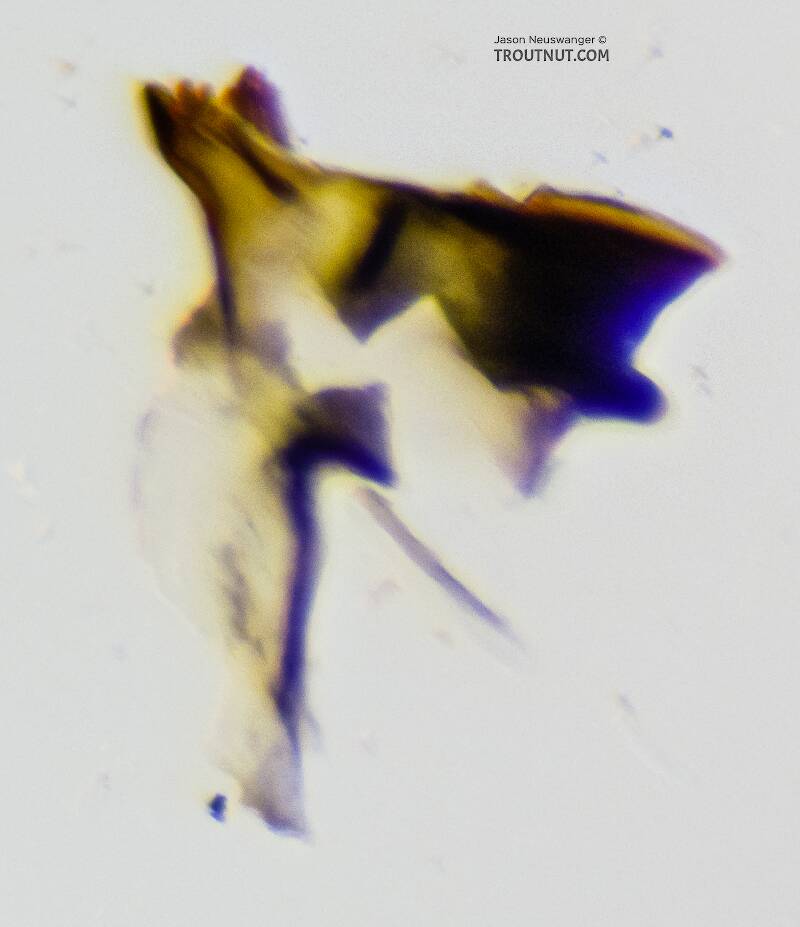
This mayfly was collected from the Yakima River in Washington on April 9th, 2021 and added to Troutnut.com by Troutnut on April 12th, 2021.
Start a Discussion of Nymph
Female Baetis tricaudatus (Blue-Winged Olive) Mayfly Nymph Pictures
Collection details
Date: April 9th, 2021
Added to site: April 12th, 2021
Author: Troutnut

